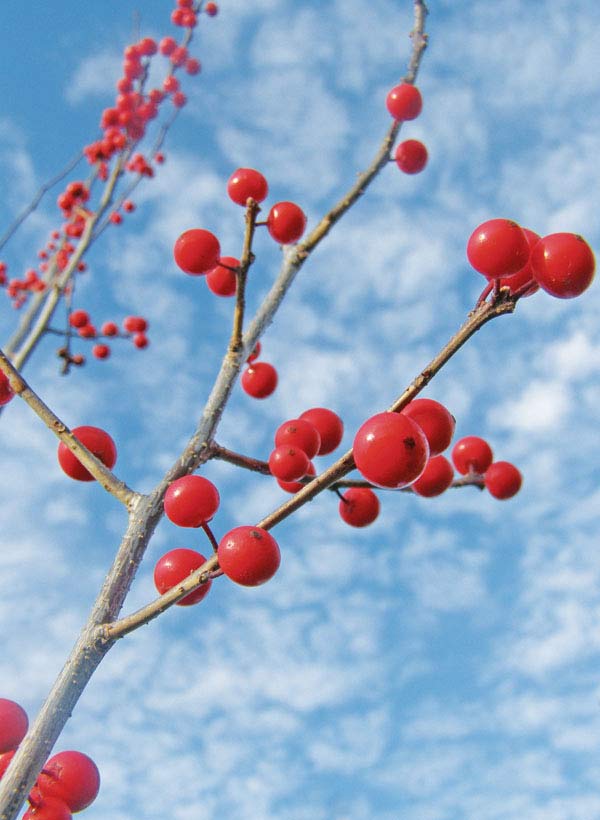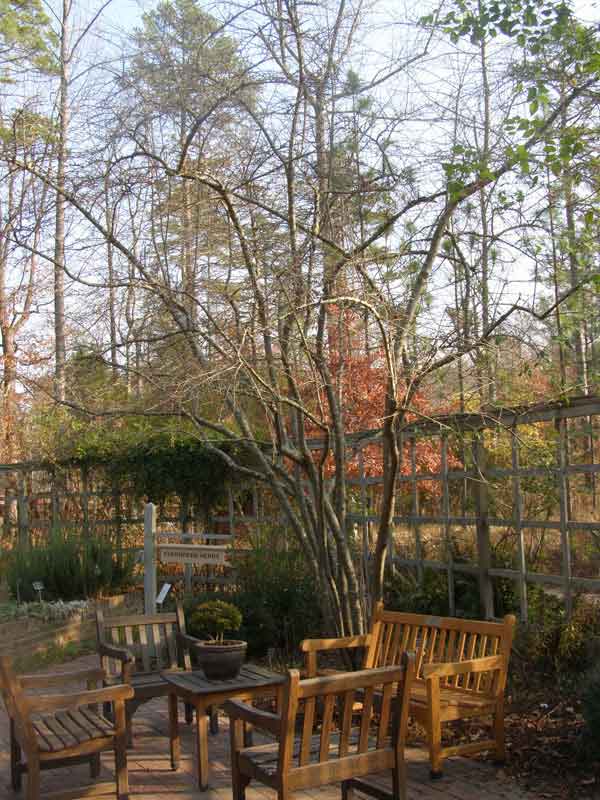Plant a deciduous holly
By Ken Moore
Flora Columnist
Last week I received a call: “Ken, where can I find a deciduous holly for my wife for Christmas?†This small native tree is not commonly found in nurseries, but this time I had a happy answer.
Having recently dropped by the Carrboro Southern States to pick up the bow of 25 yards of red ribbon being donated for the town’s giant holiday wreath, I was stopped in my footsteps by a group of deciduous hollies in full berry there in the garden center.
Though holly fruit are correctly termed drupes, most of us call them berries, and these berries absolutely sparkled. Some of the tags on the various little trees were labeled “Sparkleberry,†one of several cultivars of deciduous hollies. The true deciduous holly, Ilex decidua, a single- to multi-trunk small tree, is commonly called Possum Haw. Now, who is going to get really excited about that name? I would like to know the story behind that one. Common in woods throughout the Piedmont and coastal plain, this little tree is thoughtlessly destroyed when forests are cleared for new residential development. Unlike the more familiar evergreen spiny-leaved American Holly, Ilex opaca, deciduous hollies are not readily noticed where they are so plentiful in our local woods.
The other deciduous holly sometimes found in local nurseries is Ilex verticillata, Winterberry Holly. This one, growing throughout the state in wet habitats, will mature as a multi-stem large shrub and the berries, though often larger and brighter than the berries of the tree form, don’t seem to last as long. I believe the birds relish the flavor of the shrub berries more than the tree berries. Unless a flock of cedar waxwings or robins “de-berry†a deciduous holly tree in midwinter, your tree will bear red fruit right into spring.
My personal favorite will remain the tree form. I admire the irregular shape these trees attain with age. Several fine specimens are in the Botanical Garden’s herb garden in front of the Totten Center. Those trees were there in the woods before the herb garden. They stand there as Tolkien-like sentinels of a former time.
For the first time in several years, those holly trees are not so heavily fruited. The ones in my wild yard are not fruiting this winter. All the green berries set in the spring dropped, I believe, as a water-saving strategy. The trees themselves are still vigorous. There is wisdom in nature. Next summer, I know where my buckets of reuse water will be applied. With or without fruit, the deciduous holly is a year-round joy.
Now is a good time to plant deciduous hollies in your landscape. Make certain you get a male to accompany your females. If you live adjacent to woods, you may have males nearby. However, you most likely will not have a male Winterberry growing in your nearby woods, so a male is certainly a must. I have a magnificent Winterberry that fruits heavily every spring only to drop all the berries because there is no male friend growing near by. I’m planting a male this winter! And I know one lady who is going to be very happy on Christmas morning.
Email Ken Moore at flora@carrborocitizen.com. Find previous Ken Moore Citizen columns at The Annotated Flora (carrborocitizen.com/flora).
Photos by Ken Moore.




Comments are closed.